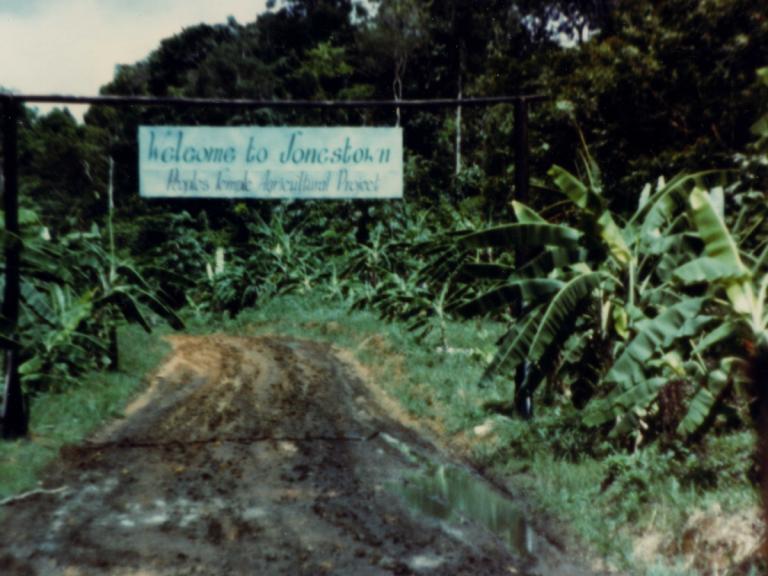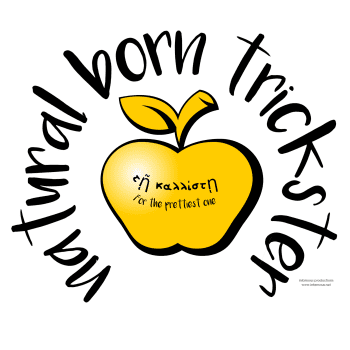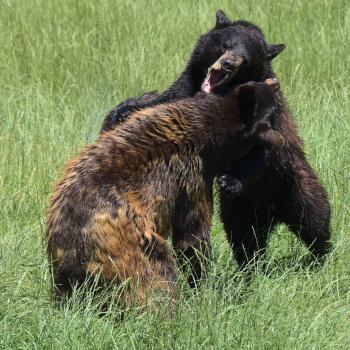“If you’re born in capitalist America, racist America, fascist America, then you’re born in sin. But if you’re born in socialism, you’re not born in sin.”[Alternative Considerations]
These words resonate with John McWhorter’s observation that, in the contemporary context of performative wokeness, “White privilege is the secular white person’s Original Sin.”McWhorter But the man who spoke them was not a contemporary “social justice warrior”.
He was the director of the Indianapolis Human Rights Commission in the early 1960s, and a pioneer in racial integration. He and his wife were the first white couple in Indiana to adopt a black child; they went on to adopt four more non-white children. He was also concerned with economic justice, starting both a soup kitchen and an employment assistance service for the impoverished.[Ksander; Mitchell]
But he was also the man who gave “drinking the Kool-Aid” its idiomatic meaning. (Actually, the poison punch may been competing brand Flavor Aid.)

At Jim Jones’s order, nine hundred and fourteen people died by mass suicide on November 18, 1978.[BBC]
For those of us in the business of unusual religious practices, the fortieth anniversary of the Jonestown Massacre is a good opportunity to pause and reflect on how we protect against dangerous cultish behavior.
And for those of us concerned with social and economic justice, it is a good opportunity to contemplate how movements that seem to have noble ends can end up deadly authoritarian nightmares.
The “Advanced Bonewits’ Cult Danger Evaluation Frame”[Bonewitz] developed by Isaac Bonewits in 1979 — in the wake of Jonestown — and widely reprinted on the web, remains a useful tool to consider the dangers that religious or occult groups pose to members and to outsiders subject to their influence.
Or the risk that political groups pose. It is sometimes hard to tell the difference.
The ABCDEF prompts us to ask, how much internal political and social power is exercised by leaders of a group? How much external political and social influence is desired or obtained? What sort of special wisdom or knowledge is claimed by leaders, and what degree of infallibility is attributed to them by members? How rigid and inflexible is the dogma being propagated?
And, quite relevant to our current political circumstances both on the right and on the left: how much is violence by or for the group approved? How much are actions which the group officially considers immoral or unethical, hypocritically approved when used by or for the group?
How much paranoia about real or imagined enemies is displayed, and how prevalent are theories about conspiracies by the group’s enemies? (In the current context this would include the Pizzagate and Q-Anon insanity, but also the various PCTs being promulgated by some Democrats about Trump being Putin’s puppet.)
And perhaps most important of all, that quality Bonewits called “grimness”: “Amount of disapproval concerning jokes about the group, its doctrines or its leader(s).”
As a Genuine and Authorized Discordian Pope, a paid-up Subgenius, and an early convert to Pastafarianism, I can tell you one absolute truth about religious and political groups: the degree to which they have a handle on a corner of the truth is proportional to the amount of humor and laughter and joie de vivre they exhibit.
Consider this: moments before he was slain by an assassin’s bullet, Martin Luther King was having a pillow fight with his friends.[Gray]
If your religious or political path is so grim that you cannot imagine such friendly clowning, you are on the wrong path, one more likely to lead to group suicide than to enlightenment.
References
Alternative Considerations of Jonestown & Peoples Temple. “Q1053-4 Transcript”. San Diego State University Department of Religious Studies. https://jonestown.sdsu.edu/?page_id=27381
BBC. “1978: Mass suicide leaves 900 dead.” On This Day 1950-2005.
http://news.bbc.co.uk/onthisday/hi/dates/stories/november/18/newsid_2540000/2540209.stm
Bonewitz, Issac. “Advanced Bonewits’ Cult Danger Evaluation Frame”. Neopagan.net. 1979, 2008. http://www.neopagan.net/ABCDEF.html
Gray, Madison. “Martin Luther King: An Assassination Remembered. Ambassador Andrew Young.” Time, 31 Mar 2008. http://content.time.com/time/specials/2007/article/0,28804,1726656_1726689_1726242,00.html
Ksander, Yaël. “Jim Jones”. Moment of Indiana History. Indiana Public Media. 25 Jun 2007. https://indianapublicmedia.org/momentofindianahistory/jim-jones/
McWhorter, John. “Atonement as Activism.” The American Interest. Vol 14 No 1, 24 May 2018. https://www.the-american-interest.com/2018/05/24/atonement-as-activism/
Mitchell, Dawn. “”Retro Indy: Jim Jones and the People’s Temple in Indianapolis.” IndyStar. 18 Nov 2013, updated 14 Nov 2018. https://www.indystar.com/story/news/history/retroindy/2013/11/18/peoples-temple/3634925/

















